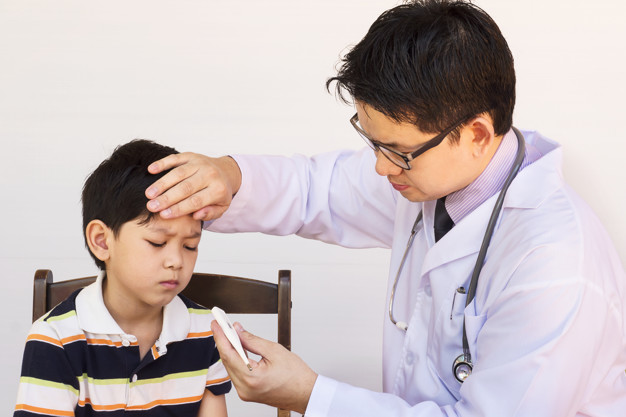#CHINESELESSON - Essential Chinese Medical Terms

Booking Your Appointment
Let’s begin with learning how to set up your doctor’s appointment.
Knowing how to have a conversation on the phone is a necessary skill to have when living in China. While hospitals accept walk-ins, clinics and outpatient departments require appointments, scheduled ahead of time via telephone.
Before you make that call, you should probably brush up on things like telling time in Chinese, as well as the days of the week.
Here are a few terms you’ll need when calling in for an appointment:
预约 (yù yuē)— appointment
手机号码 (shǒu jī hào mǎ) — cellphone number
电话号码 (diàn huà hào mǎ) — telephone number, landline
地址 (dì zhǐ) — address
电子邮件地址 (diàn zǐ yóu jiàn dì zhǐ) — email address
出生日期 (chū shēng rì qí) — date of birth
后天 (hòu tiān) — day after tomorrow
下周五 (xià zhōu wǔ) — next Friday
明天早上 (míng tiān zǎo shang) — tomorrow morning
Now, here are a few examples of what you might say while making the appointment over the phone or at the receptionist’s desk:
我要预约看医生。 (wǒ yào yù yuē kàn yī shēng.) — I want to make an appointment to see the doctor.
医生下周六上午十点有时间吗? (yī shēng xià zhōu liù shàng wǔ shí diǎn yǒu shí jiān ma?) — Is the doctor available next Saturday at 10 a.m.?
我的手机号码是一七七二零二零二零七七九。 (wǒ de shǒu jī hào mǎ shì yī qī qī èr líng èr líng èr líng qī qī jiǔ.) — My cellphone number is 17720202079.
我的出生日期是一九九零年九月二十二日。 (wǒ de chū shēng rì qí shì yī jiǔ jiǔ líng nián jiǔ yuè èr shí èr rì.) — My date of birth is September 22nd, 1990.
Basic Chinese Medical Terms
Now that you know how to make an appointment, it’s time to familiarize yourself with some Chinese medical terms, starting with the basics:
To tell someone you’re sick, just say “我病了” (wǒ bìng le). Simple enough, right?
医院 (yī yuàn) — hospital
急救室 (jí jiù shì) — Emergency Room
门诊部 (mén zhěn bù) — clinic; outpatient department
医生 (yī shēng) — doctor
护士 (hù shì) — nurse
病人 (bìng rén) — patient
药 (yào) — drugs, medicine
药方 (yào fāng) — prescription
药店 (yào diàn) — pharmacy
药剂师 (yào jì shī) — pharmacist
Let’s Talk About Your Symptoms
You’ve finally made it to your appointment and are face-to-face with your doctor. It’s time to explain why you’re here.
Again, it’s not always enough to say, “it hurts.” In addition to knowing the Chinese
In this section of the list, the terms actually double up as nouns/adjectives and verbs. So, to say: “I have x symptom,” just say: 我 (wǒ) + any of the items below.
发烧 (fā shāo) — to have a fever/high temperature
感冒 (gǎn mào) — to have a cold
头痛 (tóu tòng) — to have a headache
头晕 (tóu yūn) — to be dizzy
咳嗽 (ké sòu) — to have a cough
牙疼 (yá téng) — to have a toothache |
Address:12F,NO.58 Jiaozhou Road,JingAn District,Shanghai
Copyright © 2011-2016 All rights reserved Mandarin Morning Chinese Center.
沪ICP备11022962号-1